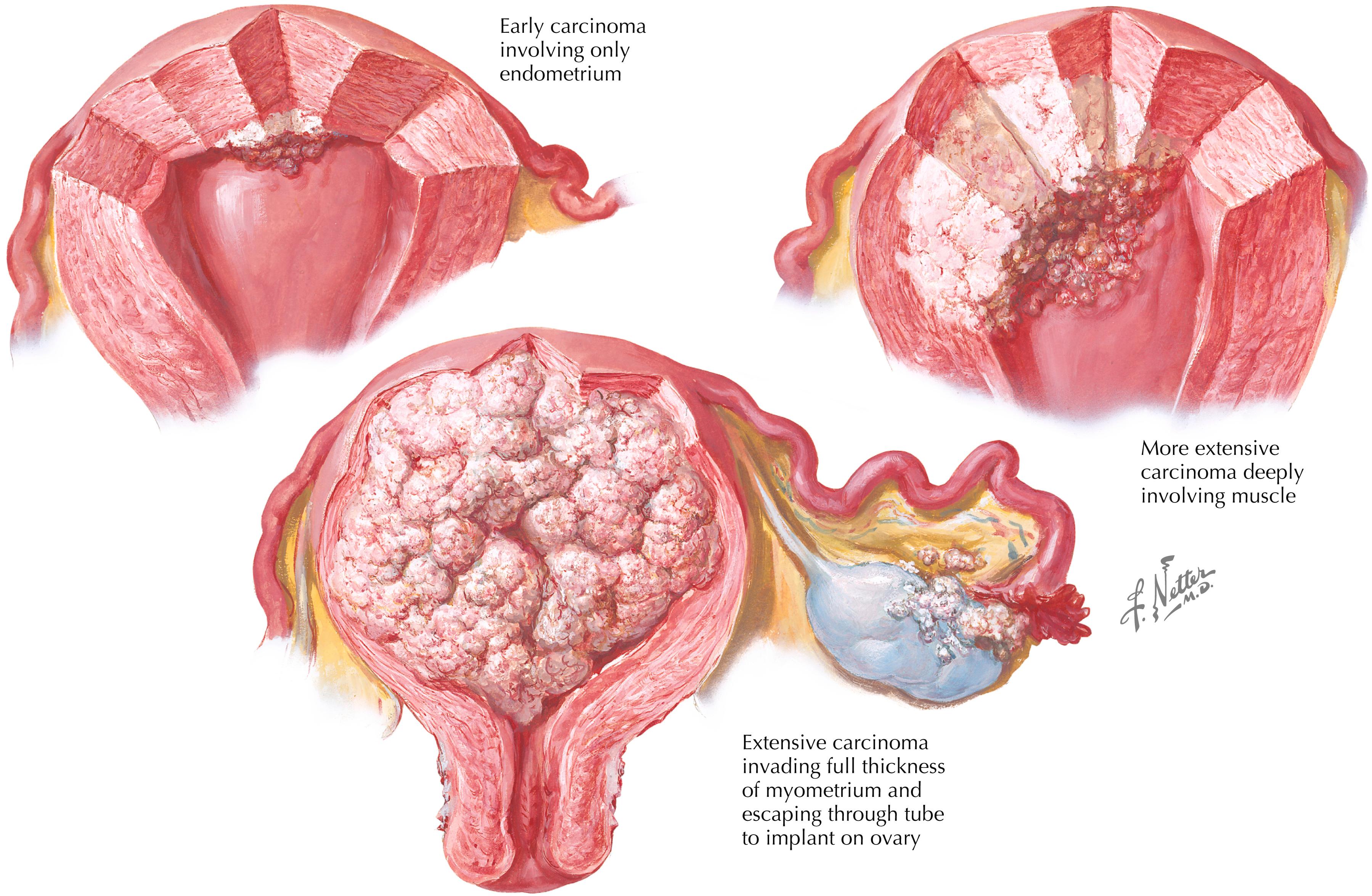Physical Address
304 North Cardinal St.
Dorchester Center, MA 02124
Description: Endometrial cancer is characterized by malignant changes of the endometrial tissues. These are generally of the adenocarcinoma (endometrioid, also called type 1 tumors, 80%), adenosquamous, clear cell, or papillary serous cell types.
Prevalence: 2%–3% lifetime risk. The most frequent malignancy of the female reproductive tract in developed countries, approximately 65,950 cases per year in the United States; 12,550 deaths each year (2022 estimate), eighth leading site of cancer-related death among American women.
Predominant Age: 55–65 years; less common below the age of 45 years (<10% of cases).

Genetics: No genetic pattern known except for conditions such as hereditary nonpolyposis colorectal cancer (HNPCC; Lynch syndrome). Cancers found in younger women are associated with mutations in the K-ras , PTEN (Cowden syndrome), or MLH1 genes.
Causes: Unopposed (without progestins) estrogen stimulation (polycystic ovary syndrome, obesity, chronic anovulation, and estrogen therapy without concomitant progestin) in 90% of cases. Selective estrogen receptor modulators with uterine activity (tamoxifen).
Risk Factors: Unopposed estrogen stimulation of the uterus (chronic anovulation, estrogen therapy, poly cystic ovary syndrome, and obesity), tamoxifen use, early menarche, late menopause, nulliparity, breast or colon cancer, diabetes, Black race (2.3-fold increased risk).
Postmenopausal bleeding (90%)
Abnormal glandular cells on Pap test (cervical cytologic tests detect only approximately 20% of known endometrial carcinomas)
Endometrial hyperplasia (complex, atypical)
Cervical cancer
Endometrial or cervical polyp
Ovarian cancer metastatic to the endometrium
Metachronous Müllerian tumor
Endometriosis
Early pregnancy (younger women)
Granulosa cell tumors
Associated Conditions: Obesity, irregular menstrual bleeding, infertility, breast or colon cancer.
Become a Clinical Tree membership for Full access and enjoy Unlimited articles
If you are a member. Log in here